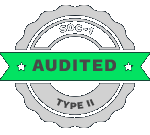If you, like many other businesses, are considering switching to the cloud, it is crucial to understand the differences between the cloud services available to you. In this article, we’ll be covering two of them: Software as a Service (SAAS) and Platform as a Service (PAAS).
Table of Contents:
Introduction
Whether you’re an established healthcare company or funded startup, you’ve probably at least vaguely considering using cloud services. But what they?
Cloud solutions, also called cloud computing, are a range of IT resources and applications. They include infrastructure, platforms and software hosted by third-party providers. Cloud services are delivered on-demand to businesses and organizations.
There are four types of cloud computing:
-
Software as a Service (SAAS)
-
Platform as a Service (PAAS)
-
Infrastructure as a Service (IAAS)
-
Serverless or On-Premise
Benefits of Cloud Computing
There’s a reason businesses are increasingly opting for cloud services. Benefits include:
-
Flexibility:
Users can access cloud services from anywhere, as long as they have an internet connection.
-
Efficiency:
Businesses can develop new apps and quickly push them into production with confidence in the underlying infrastructure.
-
Security:
Security risks of cloud services are relatively low.
Is Cloud Computing Necessary For Your Business?
Cloud computing is increasingly being seen as vital to business growth. But is it really necessary?
Cloud solutions are expected to become the default environment in enterprise IT. If the following points apply to your business, it may be a good idea to use cloud computing or go for cloud app development services.
-
Low use of existing infrastructure
-
Slow response times in on-site infrastructure
-
Business growth too high for current infrastructure
-
Data volumes overwhelming on-site storage resources
-
Distributed or very mobile user base
-
High computing infrastructure expenses leading to monetary challenges
Software as a Service (SAAS) vs Platform as a Service (PAAS)
1. Software as a Service (SAAS)
SAAS platforms make software available to businesses, organizations, and individuals over the internet and is expected to see further growth. There is usually a monthly or yearly fee, which is scalable if further resources are required.
Users do not need to install or run software apps on any computer – everything is available to them by logging into their online account. This can be done from multiple devices. Furthermore, users do not need to maintain or manage the cloud.
Software as a Service was the first cloud service to become truly popular. It still dominates among cloud computing. According to Statista, it is one of the most important technologies required to help businesses realize their goals.
Services offered in the SAAS model include but are not limited to:
-
Backup data system
-
File storage
-
Project management tools
-
Web-based email
Examples of SAAS cloud service providers: Microsoft Office 365, Google Workspaces, Dropbox, Salesforce
SAAS Drawbacks
-
In case SAAS application is not developed to follow open standards for integration, said integration with existing services and apps may pose challenges
-
Data may not be portable technically or cost effectively across SAAS applications from other vendors. This makes the service difficult to get out of
-
Limited integration support
-
Transfer of sensitive business information might result in security compromise as well as high costs
-
Limited customization and features
-
Most control lies with third-party vendor
-
Your customers depend on the third-party vendor for performance and security
Who Should Use SAAS Solutions?
If you need an application to run efficiently with minimal attention or input from your business, Software as a Service is ideal. Everything from the applications to the middleware is managed for you.
It is especially suited for:
-
Small companies or startups that do not have time to manage software or server issues and need to launch quickly
-
Apps that require both mobile and web access
-
Apps that are not required very often. Eg., tax software
-
Short-term projects that need simple, affordable and quick collaboration
2. Platform as a Service (PAAS)
Platform as a Service vendors provide software and hardware tools over the internet. These tools are then used to develop apps or software. It’s no surprise then that PAAS users tend to be developers.
As the name suggests, PAAS solutions provide a platform for businesses and individuals to create customized applications and software. What this means is that developers don’t need to write extensive code and hence don’t need to start from scratch. This saves a lot of time and money.
PAAS empowers developers to be creative with app development instead of focusing on tasks such as managing updates or security.
Examples of PAAS: Google App Engine, Windows Azure, AWS Elastic Beanstalk
PAAS Drawbacks
-
Data in vendor-controlled, third-party servers may not be secure
-
Integration can be a challenge
-
Requirements that drive decisions for some PAAS solutions may no longer apply in future
-
Complex IT system. Configuration changes and customizations might be needed for legacy systems to work smoothly with PAAS
-
Might not be optimized for frameworks and language of your choice
-
Possible loss of some operational control since some customized operations may not apply to PAAS
Who Should Use PAAS Solutions?
If you are a business or organization that wants to develop unique apps or software while remaining cost-effective, PAAS is for you. It enables you to streamline workflows when various developers are working on the same project.
Your business manages the applications and data, while the middleware, runtime, O/S, servers, and so on are managed for you.
Conclusion
When it comes to cloud computing, not all services need an equal level of system administration knowledge. SAAS requires the least, followed by PAAS, IAAS and on-premise.
Ultimately, the cloud solution you choose will depend heavily on your business needs. Whether you require software development consulting to help you decide, or are ready to reach for cloud application development, BluEnt has you covered.
Ready to take your business to the next level with cloud solutions? Contact us now!
Maximum Value. Achieved.



 How Much Does App Development Cost? A Budget Estimation Guide
How Much Does App Development Cost? A Budget Estimation Guide  Using Angular to Develop Mobile Apps Can Be a Game Changer for Your Business
Using Angular to Develop Mobile Apps Can Be a Game Changer for Your Business  Pros and Cons of the WooCommerce Plugin for Online Merchants
Pros and Cons of the WooCommerce Plugin for Online Merchants  Mean Stack vs LAMP Stack: Which One is Better for Your Business?
Mean Stack vs LAMP Stack: Which One is Better for Your Business? 
